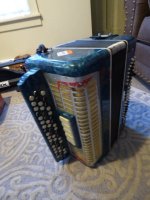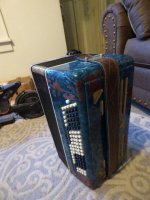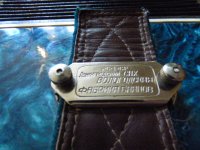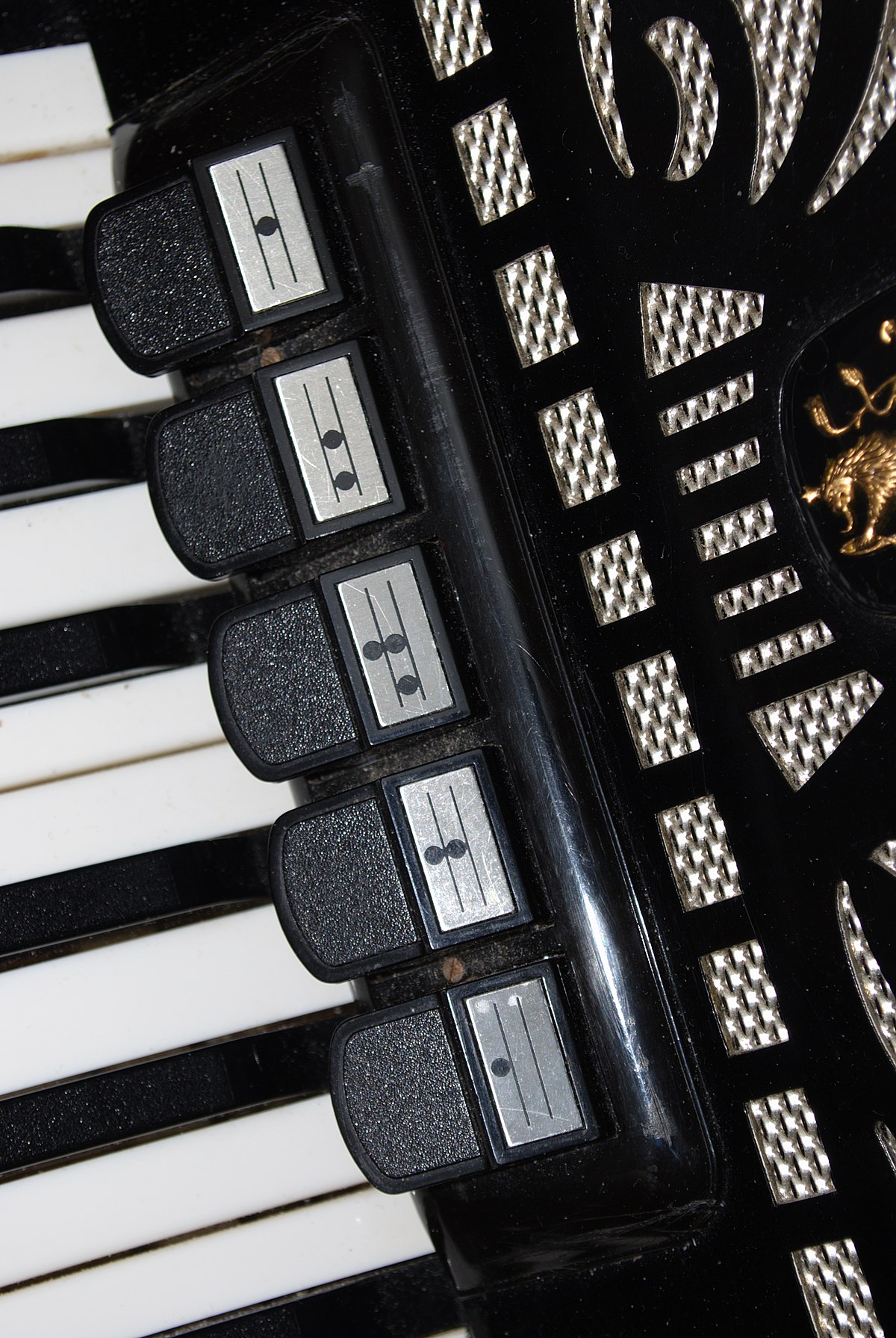jeffjot
Newbie
Hello! So GenXer here and my grammy used to play the accordion at parties when I was a kid in the 70s.... so I have these memories and finally ended up picking up one at a resale shop. I know nothing about them really, I looked it over carefully and all the keys seem to work and the mechanics look good to me.
It was one of those situations where I had to decide on the spot, or let it go.
I am rather afraid though about the white keys in front, which I can't seem to get to do anything.... my grandma passed away decades ago and no one I know plays, so I am not sure what the function of these are for and if they are actually working. I hope so but I had to take the chance. Can anyone help? Sorry for being so new.
Also I would like to restore it.... it has a lovely blue green case, which I have discovered is called Pearlite, but has quite a bit of tape residue stuck on it, apparently it was wrapped up in tape in storage. Can anyone tell me what would be safe to remove this tape and gunk from the case, without damaging the Pearlite. From experience I've found Goof Off (which I have) is rather chancy, and damages a lot of stuff..... though maybe Goo Gone, or alcohol might be ok with this material?
And yes I would like to learn how to play it. I included the label, which looks possibly Russian or Greek? I'm happy with the sound and it looks to be quality made, so I'm hoping this isn't a bad or manufacturer but if so I'm good with it. Thank for any pointers!
It was one of those situations where I had to decide on the spot, or let it go.
I am rather afraid though about the white keys in front, which I can't seem to get to do anything.... my grandma passed away decades ago and no one I know plays, so I am not sure what the function of these are for and if they are actually working. I hope so but I had to take the chance. Can anyone help? Sorry for being so new.
Also I would like to restore it.... it has a lovely blue green case, which I have discovered is called Pearlite, but has quite a bit of tape residue stuck on it, apparently it was wrapped up in tape in storage. Can anyone tell me what would be safe to remove this tape and gunk from the case, without damaging the Pearlite. From experience I've found Goof Off (which I have) is rather chancy, and damages a lot of stuff..... though maybe Goo Gone, or alcohol might be ok with this material?
And yes I would like to learn how to play it. I included the label, which looks possibly Russian or Greek? I'm happy with the sound and it looks to be quality made, so I'm hoping this isn't a bad or manufacturer but if so I'm good with it. Thank for any pointers!




